Iris T. Korsnes
Where do you live: Oslo, Norway
Your education: Oslo Academy of the Arts, BFA & MFA in medium- and material-based art
Describe your art in three words: Social community, family structure, feminism
Your discipline: Textile and drawing
Your work explores social communities and family structures. What inspired you to focus on these particular aspects of human relationships?
I grew up in a large, female-led family. My grandmother was the matriarch, and I was surrounded by women; my mother, sisters, aunts, and cousins. Even my father, raised among sisters, shared a deep bond with his own mother. This strong female presence shaped the rhythm of daily life, though I didn’t think twice about it at the time, it simply felt natural.
Everything changed when my grandmother and mother passed away within months of each other. Their absence left a void, but also opened a space for reflection. Inheriting my mother’s quilting textiles; a quiet archive of her creativity and care, prompted me to think more deeply about the role family plays in shaping identity. I began to consider how these intimate systems of support, tradition, and memory influence not only who we are, but how we navigate the world. What does it mean to come from a lineage of women? How do inherited roles and unspoken knowledge shape one’s sense of belonging?
As a teenager, I found a sense of belonging in punk and other subcultures. What caught my attention was not just the aesthetics or rebellion—it was the community. The DIY ethos, the shared values, the sense of solidarity all echoed something familiar: the cohesion and quiet strength of my family. At the time, I couldn’t articulate the connection, but in hindsight, the parallels are striking. Both offered spaces of acceptance, collective identity, and resistance to mainstream expectations.
These threads; family, loss, creativity, subculture continue to inform how I see the world and my place in it.
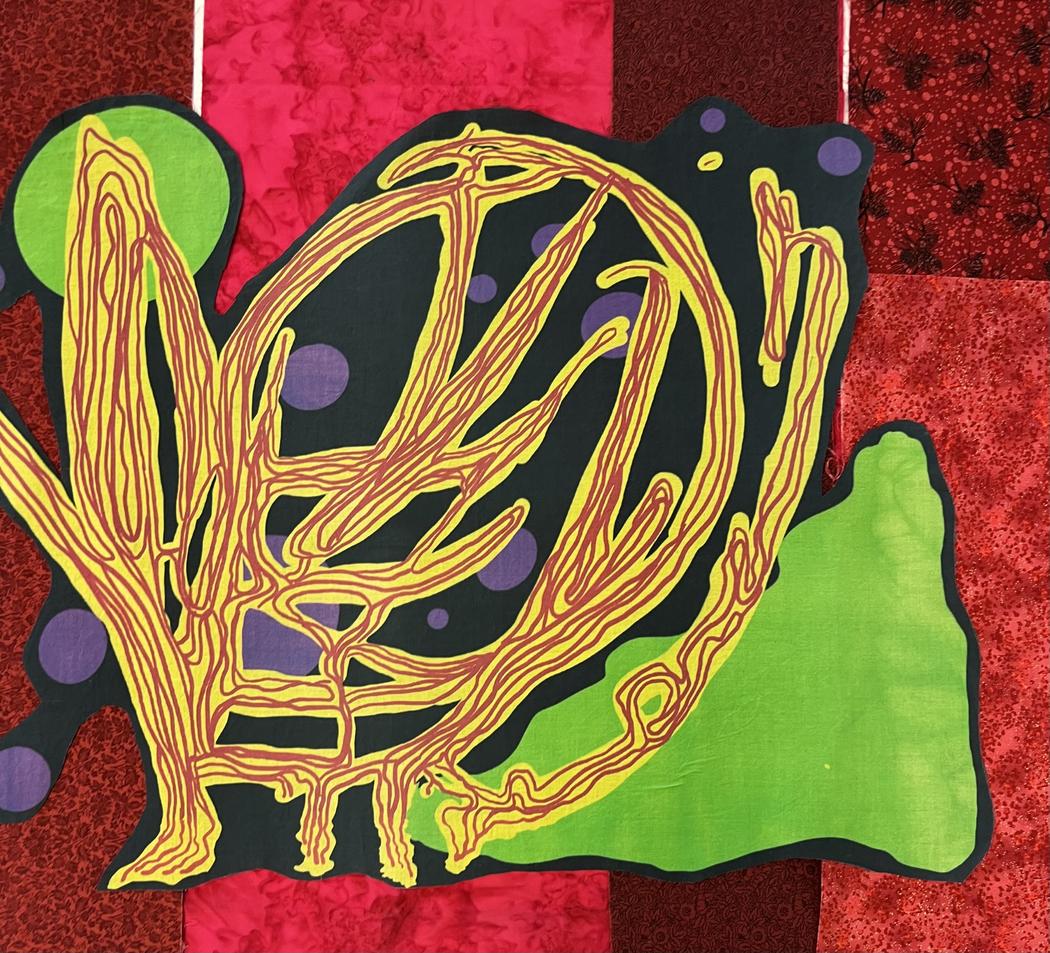 Iris T. Korsnes | The Midnight Sun | 2024
Iris T. Korsnes | The Midnight Sun | 2024
How do you approach the concept of the “human façade” in your textile-based work?
For me the human façade, is referring to the layers people construct to present themselves; what we choose to show, and what remains hidden. I’ve always been curious about what lies beneath the surface: the inherited behaviors, unspoken rules, and identity patterns passed down through generations. In many ways, our façades are stitched together from family structures, cultural expectations, and personal experiences.
In my textile-based work, I use material metaphors; layering, stitching, cutting, and mending. Textiles carry memory and meaning. They reflect both vulnerability and resilience, much like the human façade. By working with inherited fabrics and domestic techniques, I also question what identity we carry forward, and what we choose to unravel.
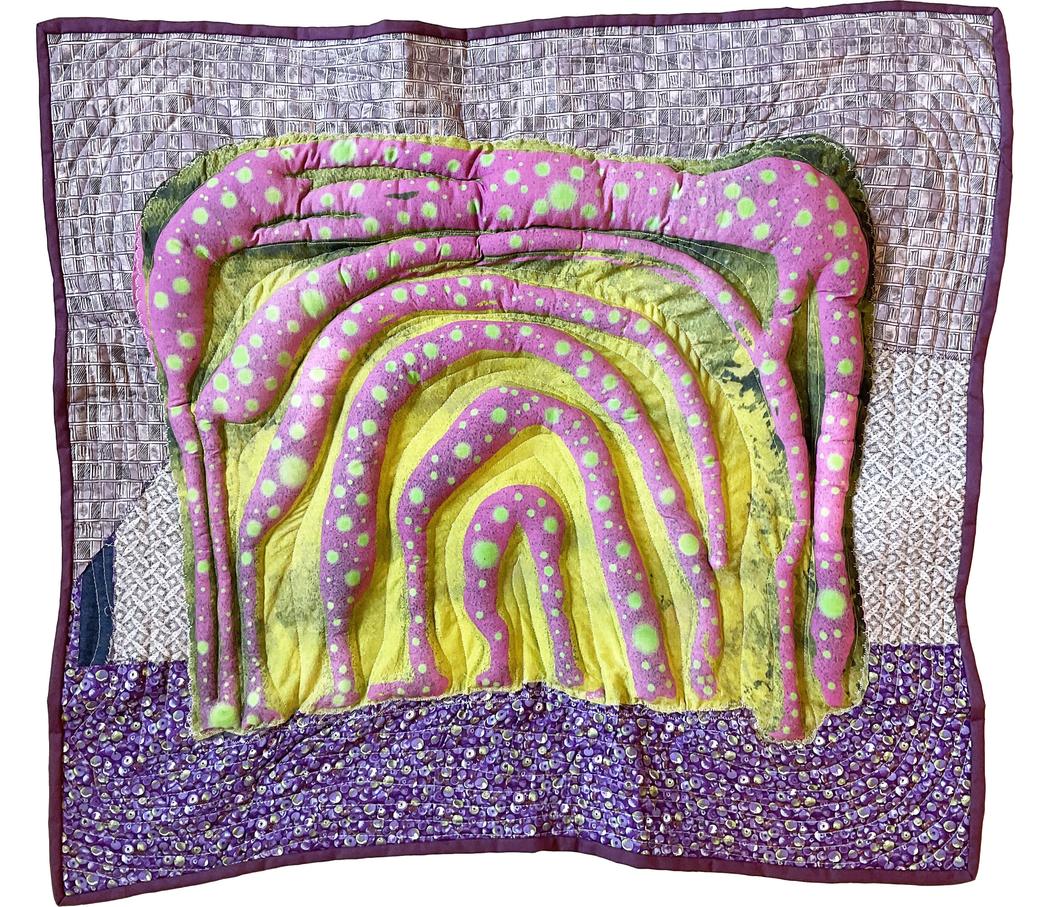 Iris T. Korsnes | The Marsh | 2024
Iris T. Korsnes | The Marsh | 2024
Could you tell us more about the role of feminism and craftivism in your practice?
Feminism is a core inspiration in my work, particularly in exploring and honoring women’s stories and roles. By working with heirloom textiles and passing down textile knowledge from mother to daughter, I highlight a legacy of female craft—an often overlooked form of creativity, resistance, and self-expression. In my family, women have been the carriers of culture, history, and strength. Using inherited materials allows me to honor their lives and labor. For me, feminism is not only about equality, but also about giving voice to generational wisdom and lived experience. It’s a tribute to the resilience, love, and skill passed through women’s hands—and a way to foreground how gender and power shape both art and cultural memory.
How do these values translate into your visual language?
I like to see myself as a storyteller, working between figurative and abstract forms. Much of my practice involves hand quilting, often incorporating materials with personal history like crocheted tablecloths and curtains from my grandmother, along with pre-cut and unfinished quilt pieces left by my mother. I began quilting after my mother passed away, partly to carry on the craft tradition, partly as a way to hold onto memories, and more importantly to pass that heritage on to my daughter.
Over time, this exploration of family history has become a posthumous dialogue, a generational thread connecting my grandmother Helga and my mother Harriet on one side, and my daughter Neeva and me on the other.
How do inherited textiles and quilting techniques help you convey intergenerational memory and identity?
Quilting has its roots in reuse, traditionally made from worn-out garments or surplus fabric. For me, working with inherited textiles adds deeper layers of meaning. These materials carry personal histories – visible in their folds, lines, cut-outs, and wear. They act as silent witnesses, holding memories, traditions, and emotional imprints, communicating through a material language that speaks without words.
This non-verbal materiality is central to my practice. It reflects the intimacy, social context, and lived history embedded in the textiles. When I received my mother’s fabrics, they still carried the scent of her study—a fleeting presence that, like memory, fades over time. That smell, along with the texture and visual motifs, contributes to a sensory experience where memory and the material become inseparable.
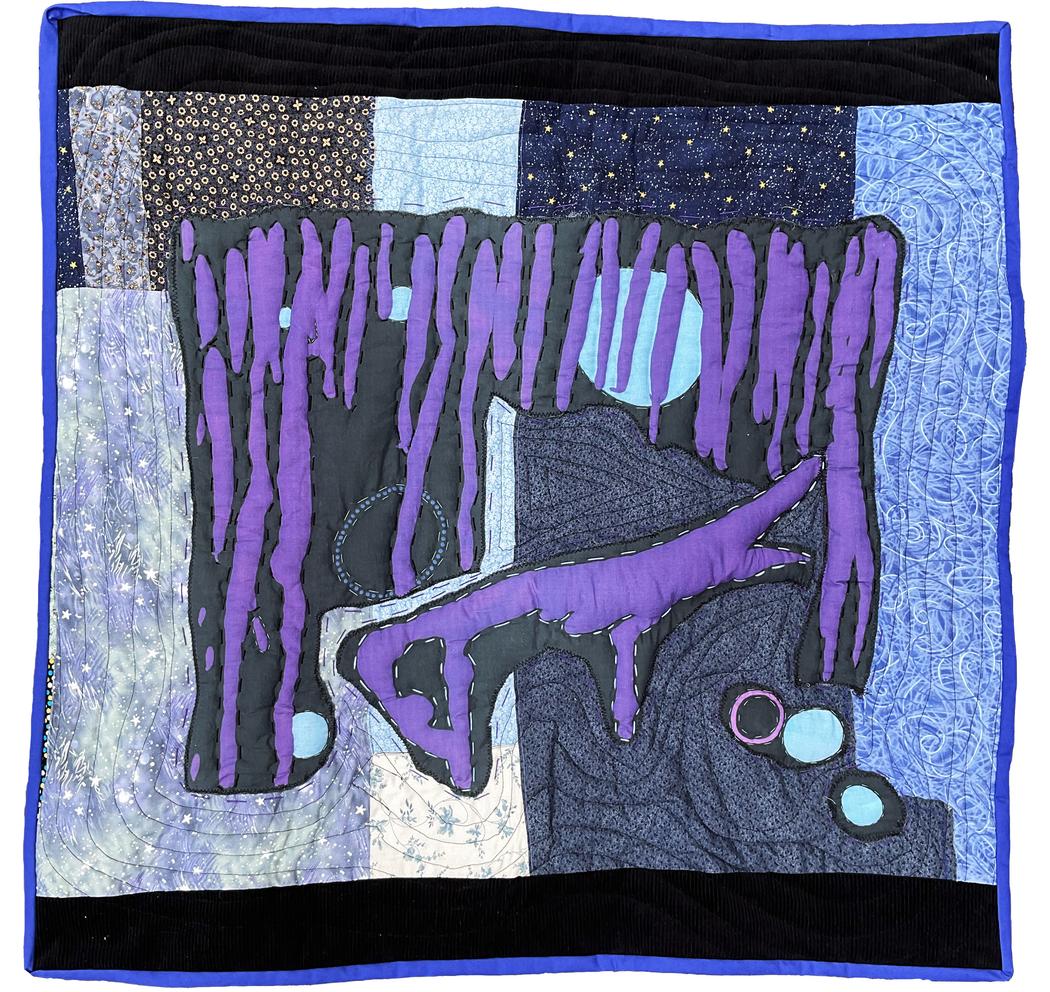 Iris T. Korsnes | Crisp Winternight | 2024
Iris T. Korsnes | Crisp Winternight | 2024
Many of your works feature layered, three-dimensional textures. How do you select materials and techniques for each piece?
I approach drawing from a textile perspective and usually begin with a concept I want to explore. I rarely sketch, I’m too impatient . Quilting is my main form of expression, often combined with reactive digital textile printing or heat transfer vinyl. Once I’ve printed a design using the digital textile printer, I study how the imagery interacts with the fabric. From there, I choose techniques and additional materials based on a mix of intent and intuition.
With heat transfer vinyl, it’s always interesting to see how the software interprets the design—those small technical shifts can lead to unexpected outcomes. Again, what happens next is guided by both deliberate decisions and instinct.
I often work within the traditional quilt structure; a three-layered sandwich, but frequently combine it with trapunto to add depth and dimension. Layering, both materially and conceptually, is at the core of my process.
What role does improvisation or spontaneity play in your quilting and textile processes?
A lot. I love working and spending time in my studio. I usually end each day with a plan for the next, though more often than not, I end up doing something entirely different. It’s essential to listen to the process rather than force it. The process has its own logic—its own voice—and I’ve learned that it’s often wiser than I am, if that makes sense.
Tacit knowledge, is also a key part of my material-based practice. In the meeting between body, material, and technique, I often experience a state of flow, an intuitive presence where the process becomes both slow and deliberate, and the aesthetic senses take over.
This kind of tacit knowledge highlights the importance of unspoken, experience-based understanding that develops through creating. It reminds us that deep expertise often exists beyond words, expressed instead through bodily awareness and aesthetic sensitivity.
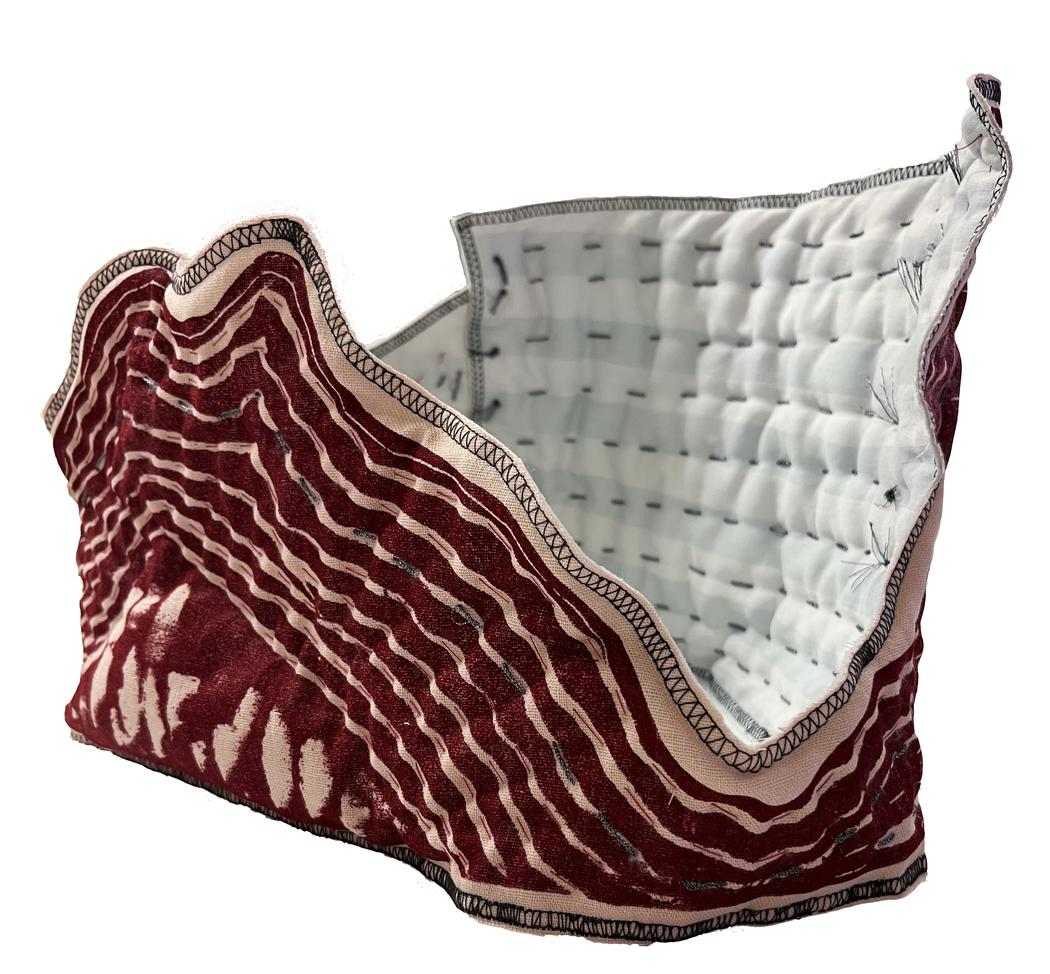 Iris T. Korsnes | All Ours Is Theirs | 2025
Iris T. Korsnes | All Ours Is Theirs | 2025
Your current project examines female lineage through a biographical lens. What discoveries have you made about your own family in the process?
The strength of the female unity I grew up with and always taken for granted, and the discovering of my own artistic drive inherited from my foremothers. Neither my mother nor grandmother were artists in a formal sense, but had they grown up today, surely both would have pursued artistic paths.
My grandmother was a farmer who made clothes on commission and knitted and crocheted to earn extra income. My mother made clothes for us children when we were young, and as our financial situation improved, she became deeply involved in quilting. My grandmother, after becoming a widow at an early age, crocheted daily for years. I now see that practice as a form of survival mode, something that gave structure and purpose after her daughters moved out and she was left alone.

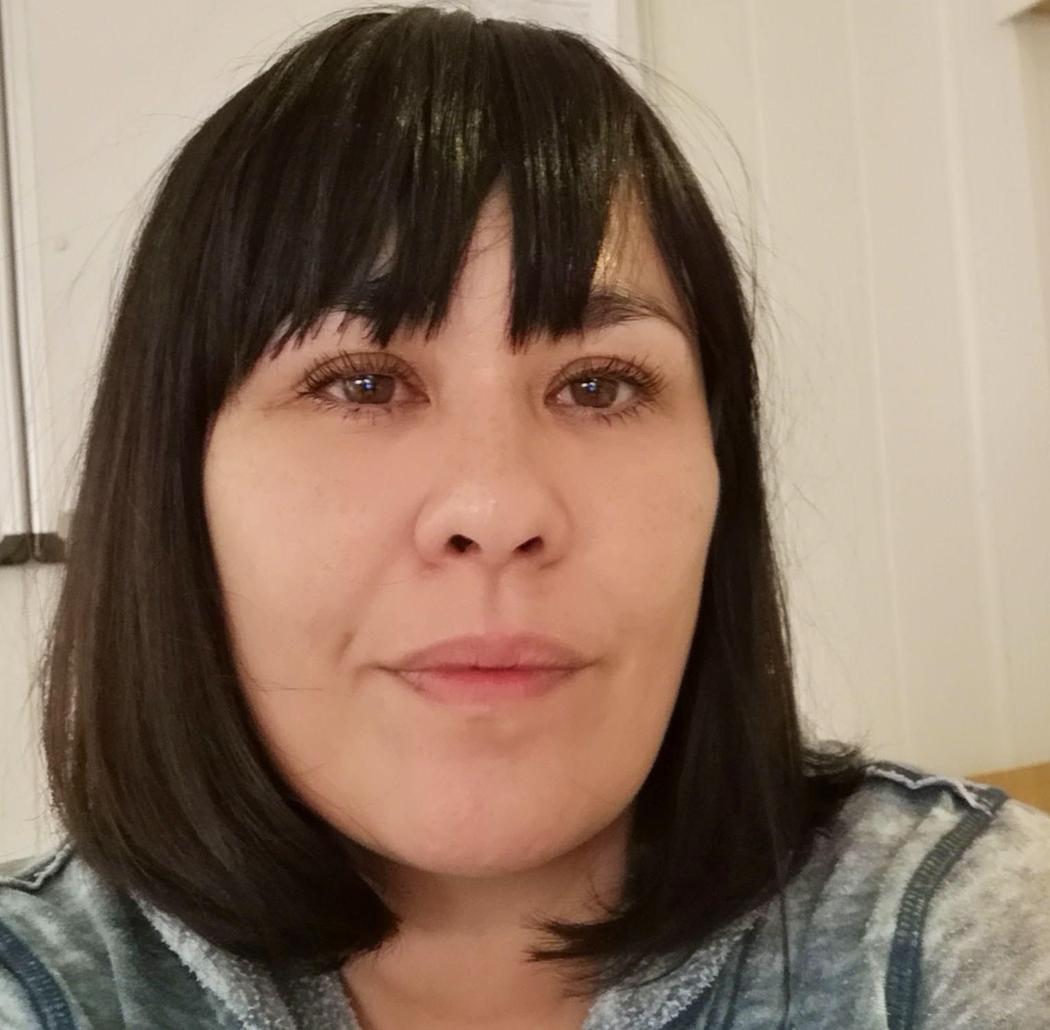
Leave a Reply